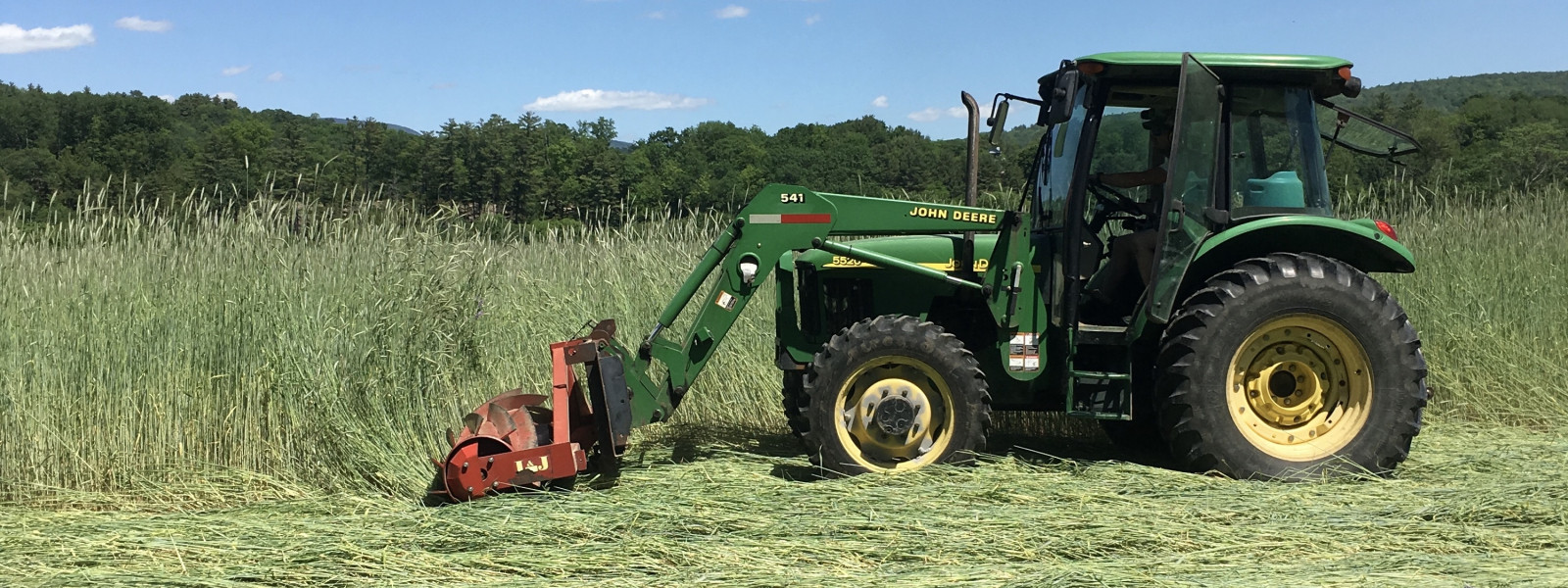Regenerative Organic Farming
Regenerative Organic Agriculture represents a set of values and practices. The main goal of regenerative organic farming is to create healthy, nutrient-dense soil and restore beneficial soil life. Soil life draws carbon from the air and sequesters it in the soil and organic matter made up of living or decomposed plant material. The more plants photosynthesizing equals more carbon captured from the atmosphere and sequestered in the soil, allowing more soil life to thrive, which regenerates this cycle supporting further plant growth, and on and on.
There are also benefits to regenerative farming practices besides carbon sequestration. Healthy soil structure increases water absorption and storage making crops more drought-resistant. Diverse soil life, including microbes, healthy bacteria, and fungi, creates a strong defense against harmful insects, pests, and plant diseases.
Regenerative practices make crops more resilient to climate change and its multitude of negative impacts.
Why are we transitioning towards a regenerative organic model of farming?
Because climate change is happening, and it is one of the most significant challenges of our time and of generations to come.
According to the USDA, the agricultural sector, with its intensive tillage and use of chemicals and livestock, emitted around 698 million metric tons of carbon-dioxide and other greenhouse gasses in 2018—10.5% of all of the greenhouse gasses emitted by humans in the US. World Bank Group scientists estimated in 2009, that agriculture was responsible for 51% of GHG emissions.
How does transitioning to regenerative farming mitigate, and even reverse, climate change?
Believe it or not, healthy soil can be a solution to climate change! Regenerative agriculture creates healthy soil, and healthy soil can act as a carbon sink, a reservoir of carbon that has been pulled out of the atmosphere.
As life in the soil flourishes, the amount of carbon pulled from the atmosphere to support life underground increases. The soil becomes a more and more powerful carbon sink, keeping increasing amounts of carbon out of the atmosphere.
So, how do regenerative farming practices create healthier soil?
By reducing (ideally to none) the amount of tilling in fields: Tilling, or turning over and mixing the top layer of soil before planting, releases the carbon stored in the soil into the atmosphere.
- How? Tilling destroys the soil ecosystem (soil microbes’ habitat) and kills the microbes and other decomposers in the soil. As the soil is mixed, the microbes are brought to the surface and begin to decompose. The carbon from their bodies bonds with the oxygen in the air and creates carbon dioxide, a greenhouse gas that contributes to climate change.
- No-till farming not only avoids this release of carbon dioxide but, by maintaining the soil structure in which microorganisms can thrive and reproduce and allowing more organic matter to build up, pulls carbon dioxide out of the atmosphere.
By planting diverse cover crops in fields: In conventional farming, fields that are no longer planted with crops often lay bare. Cover crops (crops that are planted to protect and enhance the soil) are beneficial because they:
- Increase the amount of photosynthesis happening on the farm, which pulls carbon from the atmosphere
- Increase the amount and diversity of soil microbes and other decomposers in the soil, increasing soil health and the amount of carbon stored in the soil
- Prevent erosion of soil into our waterways, which washes away healthy soil
Farming with nature, by using soil and plant amendments whose purpose is to increase soil life for the long-haul and produce healthier plants: Rather than pumping more and more fertilizers coming from off the farm (even if they are organic) into the soil, regenerative farming means continually working to create a healthy, thriving ecosystem in the soil in which plants need fewer and fewer “inputs” (fertilizers and other additives) in order to thrive. Healthy soil naturally has what plants need, including balanced nutrients. Regenerative agriculture helps create the right conditions for healthy soil and, in turn, healthy plants needing less intensive production methods.
Healthy soil is also:
- More drought resistant: the physical structure of healthy soil has increased capacity to absorb and store water, making crops grown in healthy soil less vulnerable to drought
- More disease and pest resistant: like a strong and balanced immune system can fight off a variety of germs, diverse soil life enables plants to resist damage from disease and pests
- More weed resistant: Well balanced soil life enables the stronger plants to resist insect, disease and weed damage
- Able to produce more nutritious fruits and vegetables: healthy soil has more nutrients than unhealthy soil; more nutrients in the soil means more nutrients per carrot!
How can consumers help support the changes Cedar Circle Farm is making?
- Support our work through purchasing produce from the farmstand or registering for a CSA
- Get to know your farmer and their practices
- Register for our newsletter to continue to learn more about regenerative agriculture
- Donate to our Research and Development Fund
- Vote with your fork; make every food choice with the environment in mind. Your purchases are directly supporting our efforts in minimizing our carbon footprint

